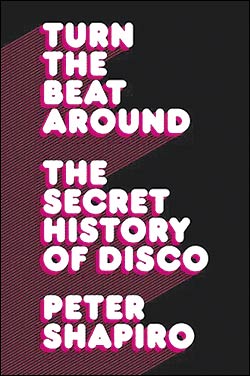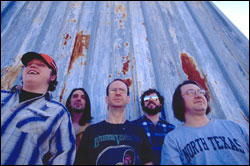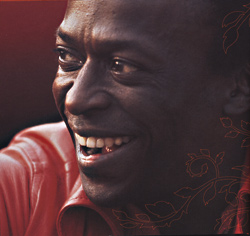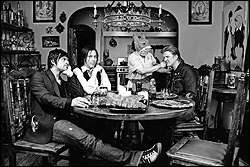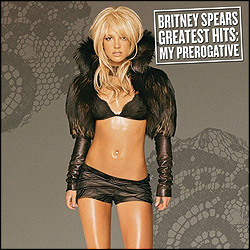“The ’70s” deserves better. Sure, “the ’60s” streamlines 3,652 disparate days into a reductive montage of iconic images, set to a treacly Byrds soundtrack, unfolding with a seamless tragic inevitability. But if the allusive power of the very phrase “the ’60s” overwhelms our ability to place that decade in historical perspective, at least the generalizations are weighty: Beatles and Stones, JFK and MLK, Vietnam and Woodstock, maaaaan. “The ’70s” is merely the sum of its cultural by-products, and its kitschiest ones at that. Even as I write this, two overexcitable knobs who couldn’t have been born before the first Reagan administration are fumbling with Operation, “the Wacky Doctor’s Game,” on MTV’s The 70s House. My parents suffered through Watergate, gas lines, and double-digit inflation for this?
Peter Shapiro is the second music critic this year old enough to remember better and sharp enough to set us straight. Just as Jeff Chang’s equally essential Can’t Stop Won’t Stop uncovered the battered borough of arson and Reggie Jackson and gang violence usually obscured by the vacuous truism “Hip-hop began in the Bronx,” Shapiro’s Turn the Beat Around: The Secret History of Disco (Faber & Faber, $26) bombards you with detailed social context until you nod assent to his thesis: The ripe, hedonistic generalizations we lump under the phrase “disco” were birthed from a specific kind of urban decay at a specific moment in history, when the continued viability of New York City didn’t seem inevitable—or, for some Americans, even desirable. And he’s just getting started, folks.
That notion is just the core of an insanely wide-ranging book that occasionally seems to attempt a full history of folks dancing to recorded music, beginning with the Swing Kids who defied Nazi prohibitions against jazz and wrapping up whenever you stagger back from the club tomorrow morning. The information overflows into stand-alone subhistories tucked beneath the text where footnotes generally reside. And the quotes are revelatory even when they’re misguided. New York Times columnist William Safire’s declaration that the hustle offers evidence of a new sense of conservative responsibility in popular culture, because you dance with a partner rather than shimmying on your own, should give pause to anyone who thinks culture is ever just one thing, rather than an intricate series of interlocking impulses. And if the delightfully glib (and often insightful) Nile Rodgers really does think that Chic’s masterful 1980 album, Real People, is a step down from their earlier hits, that’s just another reason not to trust a musician’s judgment of his work.
Shapiro hardly breezes past the music. If, for instance, you want a detailed explication of how the Salsoul label’s Latin disco differs from the lush productions of Philadelphia International, despite employing many of the same musicians, look no further. And when faced with George Clinton’s accusation that disco’s beat is inhumane and mechanical, Shapiro basically retorts with a history of rhythm in American recorded music stretching back past New Orleans marching bands. (If his defense is not quite as satisfying as it is exhaustive, that’s one drawback of his tome’s immense scope—each of these chapters raises questions that could take up an entire book of their own.) In fact, after sweating through the dirty work of documenting disco’s rise as a tawdry late-’70s phenomenon, Shapiro retreats to New York’s Paradise Garage with a slight sense of relief. Like the dancers at that legendary club, Shapiro longs to be lost in the music.
Yet he never shirks his duty as a historian or doubts that concrete facts will provide the context to explain events. Despite his subtitle, Shapiro’s “secret history” is no Greil Marcus–style jumble of confluences and coincidences and affinities seeking a mysterious cultural logic that lurks beyond the illusions of the everyday. For Shapiro, pop is something that must be made before it is consumed. And as such, his sympathies are with the producers of culture— musicians, of course, but also impresarios and dancers themselves—over “East Side dating guys” and “bridge and tunnel” consumers who don’t quite get it. To his credit, Shapiro is never wholly dismissive of those glamorless types, but as disco shifts from a refuge for outcasts to a pattern of consumption, he does grow uneasy. Though he’s too smart to argue that a mass audience ever merely co-opts a subculture, it’s clear where his sympathies lie.
And who wouldn’t prefer to hang with those engaged ecstatic believers out to create their own world rather than simpleminded suburbanite tourists? Ah, but that’s a loaded question. If both Shapiro and Chang provide records of the deeds of pioneers, preserving the true genesis of the music they love from the hazy public perception that distorts it, they also run up against the boundaries of what a social history of a pop phenomenon can tell us, demonstrating (both implicitly and explicitly) that the creation of a culture is never wholly separate from its reception. When future critics attempt a similar operation upon “the ’80s,” that decade may be even more difficult to extract from its pop artifacts. I just hope we won’t have to wait another decade to find out.
